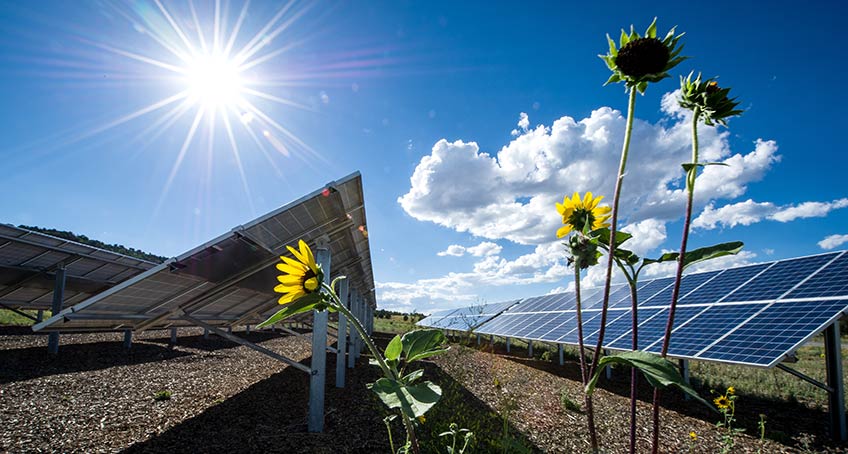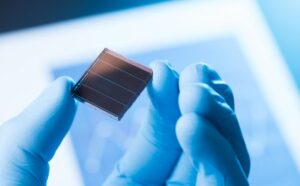Is photovoltaics safe for health?
The growing popularity of photovoltaic panels may cause doubts as to what is the impact of photovoltaics on human health. Behind such questions, questioning the legitimacy of having this type of installation, may be mistrust of modern solutions, often conspiracy theories, but most often it is a lack of knowledge and fear for the health of loved ones, which is completely understandable. Therefore, instead of listening to unproven stories, it is worth reading in more detail what the specialists say. So is photovoltaics safe for health? Yes, but one step at a time.
Are photovoltaic panels harmful to health? Myths and facts
Regardless of intentions, a number of people are concerned about the health effects of photovoltaics. During the last few years of development of the offer has accrued a lot of myths, which are worth dealing with at this point.

Is photovoltaics harmful to health
Myth – Photovoltaic panels allegedly produce harmful magnetic fields. According to proponents of this view, people can suffer from dizziness, malaise, nausea, sleep disturbances, vision, and even severe headaches.
Fact – The panels do indeed generate a magnetic field, but according to research this is the so-called non-ionizing radiation, i.e. radiation that does not cause cellular damage and does not adversely affect the environment. It is worth noting that all electrical devices generate electromagnetic fields, from Wi-Fi, through cell phones, to TVs and even shavers and hair dryers, and the amount of radiation does not adversely affect the human body. Photovoltaics also do not emit excessive so-called electromagnetic noise.
Myth – Photovoltaics have a negative impact on the environment. The main objection relates to the need to produce the panels themselves, and in addition, the mere disposal of future electro-waste can have a bad impact on nature.
Fact – Yes, the production of photovoltaic panels does produce a carbon footprint, but it is much smaller than energy production from traditional sources, especially fossil fuels. 1 kWh of energy derived from coal “costs” about 1000 g of carbon dioxide, while in the case of photovoltaics it is only 50 g! What’s more, the products from which the panels are made, such as glass and silicon, are of natural origin, and their disposal after several decades of use is subject to strict requirements on manufacturers, which guarantees safety of use.
Myth – Photovoltaics are a risk of fire, electrocution and lightning!
Fact – Correct, but only in the case of improperly performed installation and questionable quality of materials, wiring and insulation. Potential ignitions are mainly the result of damage during installation, electrocution in the absence of short-circuit and overvoltage protection, and lightning “pull” due to the lack of lightning protection systems. Therefore, it is absolutely recommended to use the services of photovoltaic companies with extensive experience and an established position in the market.
Is photovoltaics healthy? Yes, because…
Fact – Electricity obtained with photovoltaic panels from a renewable energy source, which is solar radiation, is pure ecology. Replacing entire power plants and traditional furnaces, which often burn dangerous substances that produce carcinogenic dust, resulting in smog, is the easiest way to the health of ourselves and our children!
Fact – Photovoltaics means much lower electricity bills. You can also become independent from the power grid by installing your own energy storage. And everyone will be happy if they can save money and use it to improve the comfort of life for the whole family!
 L’obtention d’énergie à partir de sources renouvelables, c’est-à-dire à partir du rayonnement solaire, n’est pas nocive pour les personnes ou l’environnement. Les installations photovoltaïques correctement conçues et installées qui poussent sur notre propriété comme des champignons après la pluie ne présentent aucune menace pour la vie et la santé des humains et des animaux.
L’obtention d’énergie à partir de sources renouvelables, c’est-à-dire à partir du rayonnement solaire, n’est pas nocive pour les personnes ou l’environnement. Les installations photovoltaïques correctement conçues et installées qui poussent sur notre propriété comme des champignons après la pluie ne présentent aucune menace pour la vie et la santé des humains et des animaux.
Une installation photovoltaïque, c’est :
- Aucune émission (zéro émission) – cela signifie que le fonctionnement d’une installation photovoltaïque n’émet aucune substance dans l’atmosphère (gaz, poussière, composés chimiques). Plus les gens utilisent des centrales solaires domestiques, moins les émissions d’oxydes d’azote, de soufre et de particules solides (par exemple présentes dans le smog) sont produites dans les chaufferies au charbon ou au bois. On estime que chaque 1 000 kWh d’énergie photovoltaïque réduit les émissions de dioxyde de carbone de 812 kg par an.
- Silencieux – une installation photovoltaïque en fonctionnement n’émet pas de bruit excessif, les transformateurs ont un niveau de puissance acoustique très faible, et même si ce petit bruit s’avère trop fatiguant pour les utilisateurs, vous pouvez toujours équiper le transformateur d’une isolation phonique spéciale.
- Avec une empreinte carbone de plus en plus réduite, l’empreinte carbone est un calcul des émissions totales de gaz à effet de serre pendant tout le cycle de vie d’un produit. Il est exprimé en équivalent dioxyde de carbone par unité fonctionnelle du produit (CO2e / unité fonctionnelle).
Le rayonnement électromagnétique non ionisant accompagnant le travail de l’installation photovoltaïque ne détériore pas le climat électromagnétique de l’environnement naturel ou notre santé – il n’affecte pas le travail des organes internes, notre bien-être général ou l’ADN.
